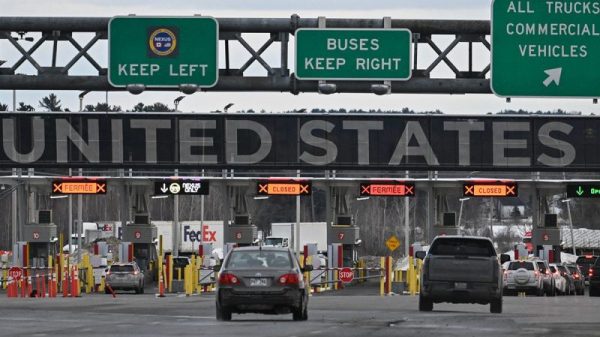“Do you think that every fingerprint is actually unique?”
It’s a question that a professor asked Gabe Guo during a casual chat while he was stuck at home during the Covid-19 lockdowns, waiting to start his freshman year at Columbia University. “Little did I know that conversation would set the stage for the focus of my life for the next three years,” Guo said.
Guo, now an undergraduate senior in Columbia’s department of computer science, led a team that did a study on the subject, with the professor, Wenyao Xu of the University of Buffalo, as one of his coauthors. Published this week in the journal Science Advances, the paper seemingly upends a long-accepted truth about fingerprints: They are not, Guo and his colleagues argue, all unique.
In fact, journals rejected the work multiple times before the team appealed and eventually got it accepted at Science Advances. “There was a lot of pushback from the forensics community initially,” recalled Guo, who had no background in forensics before the study.
“For the first iteration or two of our paper, they said it’s a well-known fact that no two fingerprints are alike. I guess that really helped to improve our study, because we just kept putting more data into it, (increasing accuracy) until eventually the evidence was incontrovertible,” he said.
A new look at old prints
To get to its surprising results, the team employed an artificial intelligence model called a deep contrastive network, which is commonly used for tasks such as facial recognition. The researchers added their own twist to it and then fed it a US government database of 60,000 fingerprints in pairs that sometimes belonged to the same person (but from different fingers) and sometimes belonged to different people.
As it worked, the AI-based system found that fingerprints from different fingers of the same person shared strong similarities and was therefore able to tell when the fingerprints belonged to the same individual and when they didn’t, with an accuracy for a single pair peaking at 77% — seemingly disproving that each fingerprint is “unique.”
“We found a rigorous explanation for why this is the case: the angles and curvatures at the center of the fingerprint,” Guo said.
For hundreds of years of forensic analysis, he added, people have been looking at different features called “minutiae,” the branchings and endpoints in fingerprint ridges that are used as the traditional markers for fingerprint identification. “They are great for fingerprint matching, but not reliable for finding correlations among fingerprints from the same person,” Guo said. “And that’s the insight we had.”
The authors said they are aware of potential biases in the data. Although they believe the AI system operates in much the same way across genders and races, for the system to be usable in actual forensics, more careful validation is required through the analysis of a larger and broader database of fingerprints, according to the study.
However, Guo said he’s confident that the discovery can improve criminal investigations.:
“The most immediate application is it can help generate new leads for cold cases, where the fingerprints left at the crime scene are from different fingers than those on file,” he said. “But on the flip side, this won’t just help catch more criminals. This will also actually help innocent people who might not have to be unnecessarily investigated anymore. And I think that’s a win for society.”
‘A tempest in a teacup’?
Using deep learning techniques on fingerprint images is an interesting topic, according to Christophe Champod, a professor of forensic science at the School of Criminal Justice of the University of Lausanne in Switzerland. However, Champod, who wasn’t involved in the study, said he doesn’t believe the work has uncovered anything new.
“Their argument that these shapes are somewhat correlated between fingers has been known from the early start of fingerprinting, when it was done manually, and it has been documented for years,” he said. “I think they have oversold their paper, by lack of knowledge, in my view. I’m happy that they have rediscovered something known, but essentially, it’s a tempest in a teacup.”
In response, Guo said that nobody had ever systematically quantified or used the similarities between fingerprints from different fingers of the same person to the degree that the new study has.
“We are the first to explicitly point out that the similarity is due to the ridge orientation at the center of the fingerprint,” Guo said. “Furthermore, we are the first to attempt to match fingerprints from different fingers of the same person, at least with an automated system.”
Simon Cole, a professor in the department of criminology, law and society at the University of California, Irvine, agreed that the paper is interesting but said its practical utility is overstated. Cole was also not involved in the study.
“We were not ‘wrong’ about fingerprints,” he said of forensic experts. “The unproven but intuitively true claim that no two fingerprints are ‘exactly alike’ is not rebutted by finding that fingerprints are similar. Fingerprints from different people, as well as from the same person have always been known to be similar.”
The paper said the system could be useful in crime scenes in which the fingerprints found are from different fingers than those in the police record, but Cole said that this can only occur in rare cases, because when prints are taken, all 10 fingers and often palms are routinely recorded. “It’s not clear to me when they think law enforcement will have only some, but not all, of an individual’s fingerprints on record,” he said.
The team behind the study says it’s confident in the results and has open-sourced the AI code for others to check, a decision both Champod and Cole praised. But Guo said the importance of the study goes beyond fingerprints.
“This isn’t just about forensics, it’s about AI. Humans have been looking at fingerprints since we existed, but nobody ever noticed this similarity until we had our AI analyze it. That just speaks to the power of AI to automatically recognize and extract relevant features,” he said.
“I think this study is just the first domino in a huge sequence of these things. We’re going to see people using AI to discover things that were literally hiding in plain sight, right in front of our eyes, like our fingers.”







































